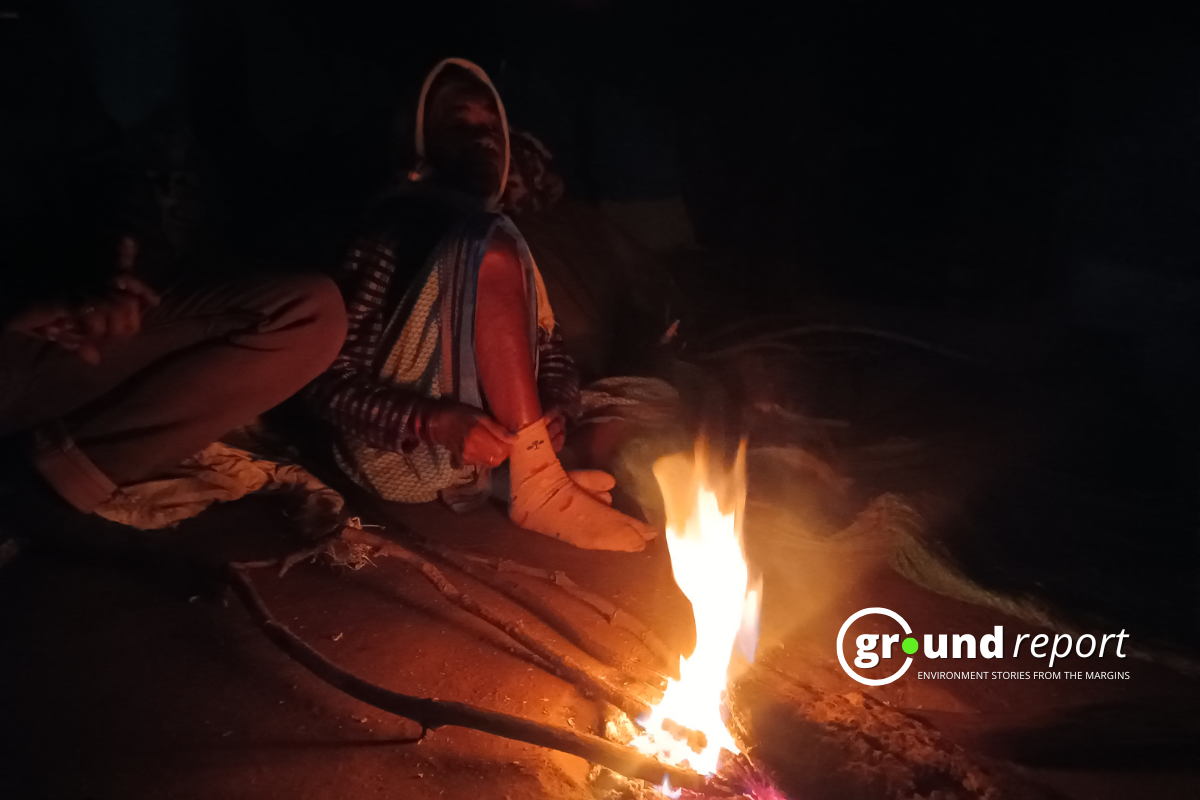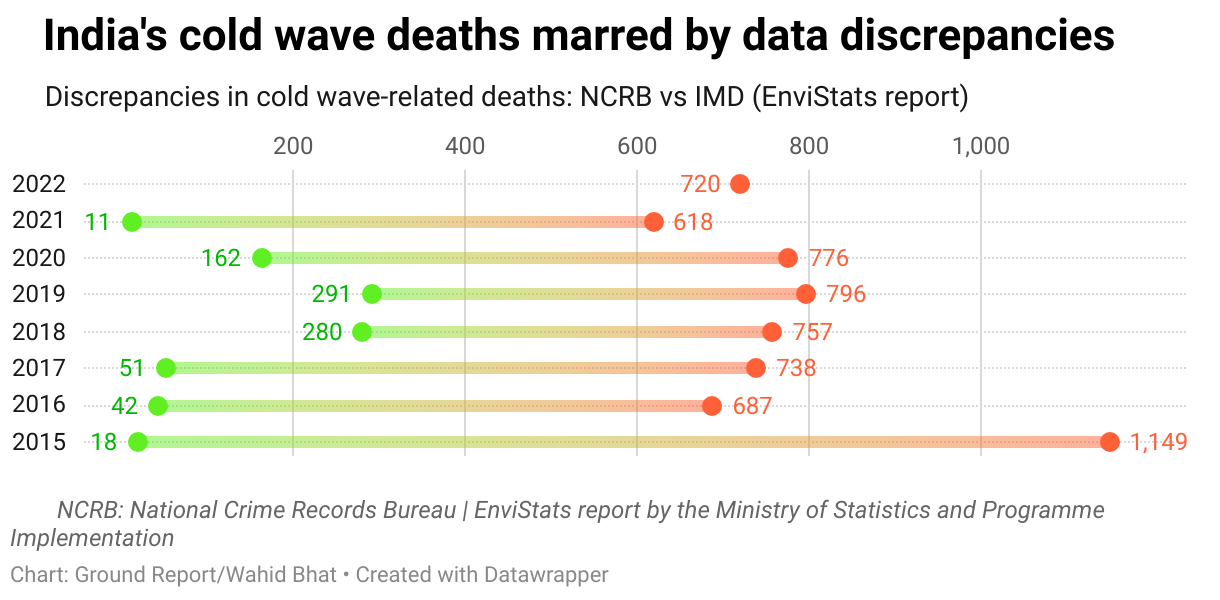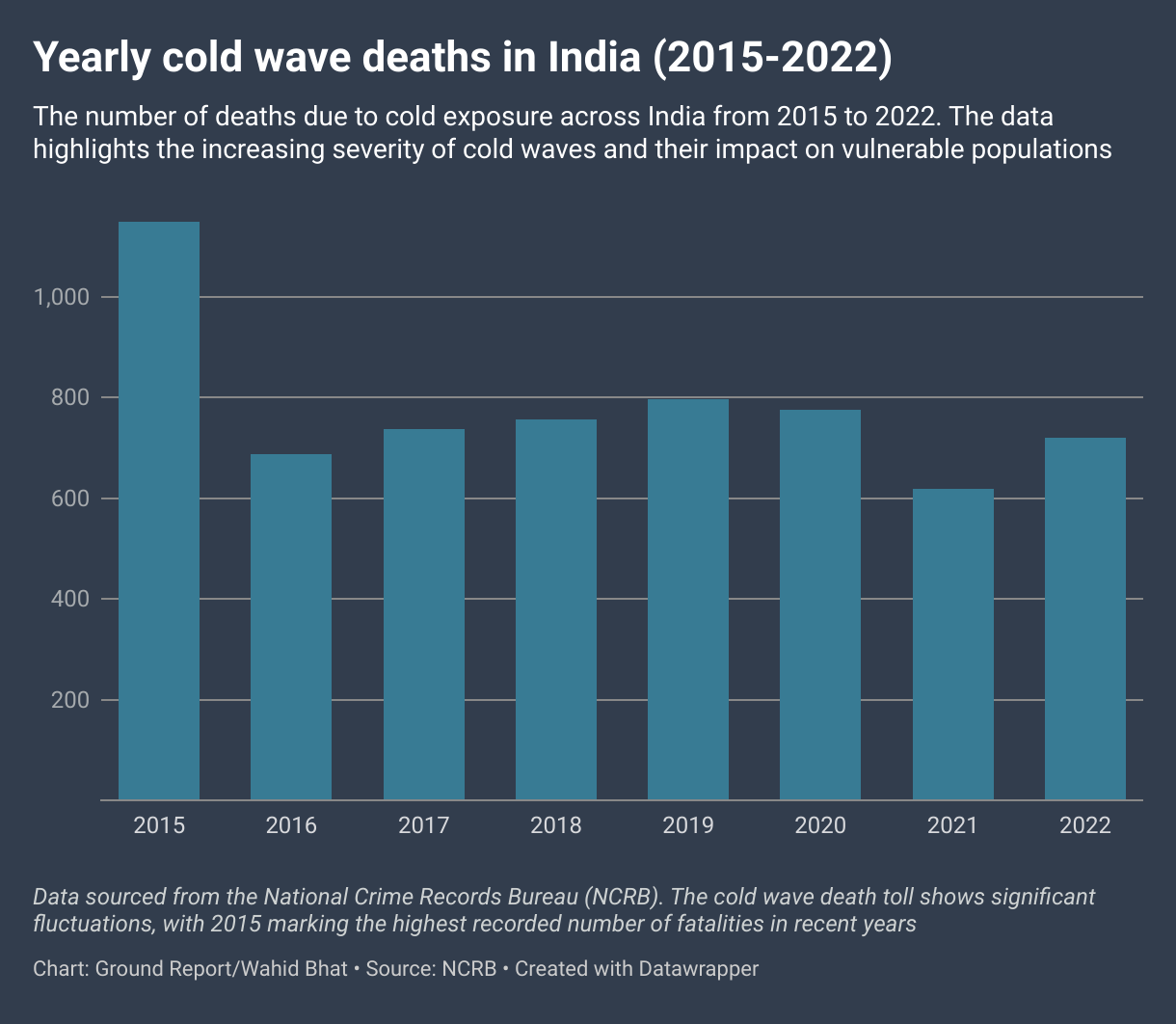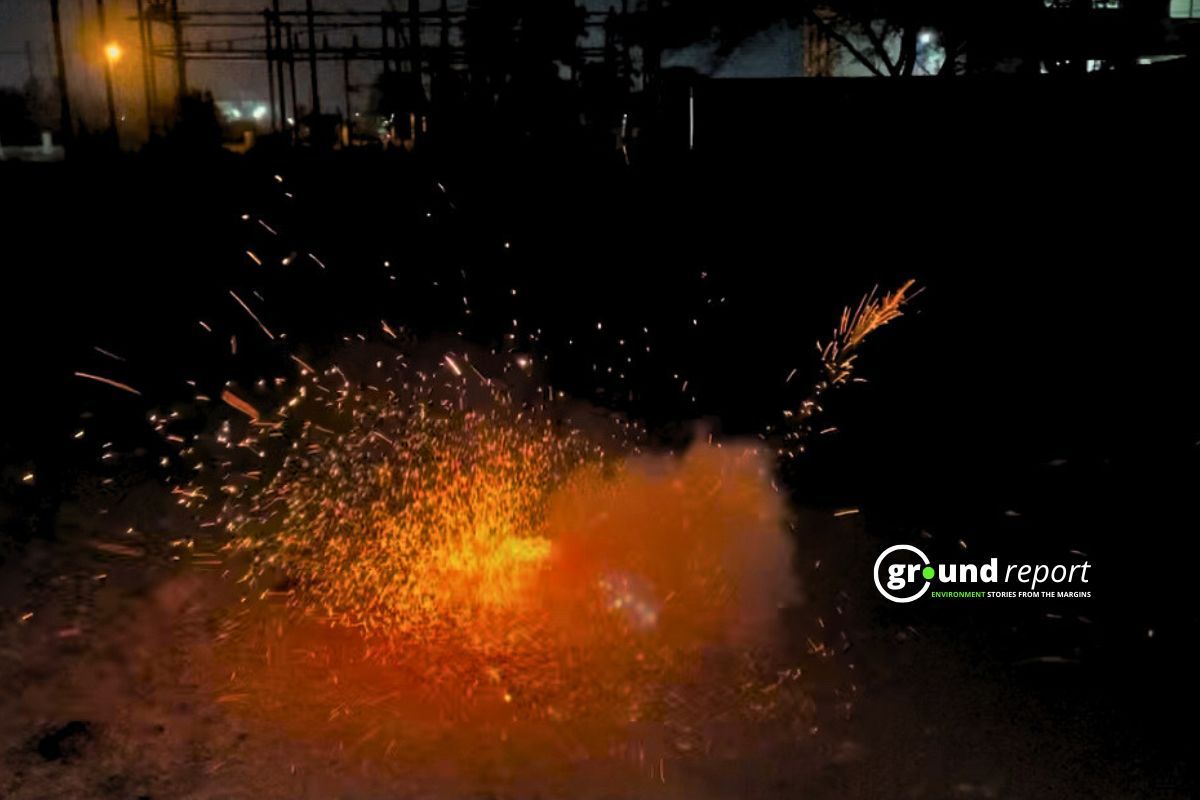On 18 January 2025, the deaths of two elderly individuals in Madhya Pradesh’s Datia due to extreme cold highlight the impact cold waves can have on vulnerable populations. Such cases illustrate how cold exposure can exacerbate existing health issues, leading to fatalities.
Extreme cold waves continue to pose serious health risks, particularly for the elderly and vulnerable populations. The deaths of two elderly individuals in Datia due to brain haemorrhages—exacerbated by pre-existing conditions like diabetes and high blood pressure—highlight the deadly impact of cold exposure.
Similarly, in Singrauli district, Laxman Prasad Kushwaha and his wife Maya attempted to stay warm by burning coal in their room. Tragically, this led to carbon monoxide poisoning; Laxman was found dead, and Maya remains in critical condition. Their son discovered them unconscious after breaking open the door.
According to the National Crime Records Bureau (NCRB) data from 2001 to 2019, cold waves caused 4,712 deaths across various states. However, between 2019 and 2022, the death toll was 2,910, showing a notable increase in fatalities.
In the last six years, cold waves caused 4,405 deaths, with the National Crime Records Bureau (NCRB) reporting an average of 810 cold-related fatalities annually between 2013 and 2022. This highlights the deadly nature of cold waves and the growing severity of this weather pattern, affecting millions, particularly in the northern and central parts of the country.
While the risks of cold waves are well-documented, discrepancies in cold wave-related death data make it challenging to assess the true scale of the issue. Ground Report analysis of both datasets found significant discrepancies between the two sources.
Cold waves increase; health risks rise
These impacts are more acute in northern India, where winter temperatures drop below 8°C. The poor, who lack adequate shelter and clothing, are at greater risk of cold-related health problems. Winter sees an increase in emergency hospital admissions due to frostbite, pneumonia, and other cold-induced illnesses.
IMD Director General Mrutunjay Mohapatra acknowledged the challenges posed by climate change, saying
“Climate change limits forecast accuracy. However, our ability to predict heavy rainfall has improved, rising from 60% to 80% in the past five years. We are working on identifying and predicting even the smallest weather shifts.”
In a press release on December 29, 2024, the IMD warned of possible disruptions to transport services in the Delhi-NCR region, including trains, aviation, and road networks, as well as potential power outages. Dense fog could also cause health risks like lung issues and eye irritation.
Despite global concern over global warming and its impact on heatwaves, cold waves have been increasing in India. A study by the Indian Institute of Science Education and Research (IISER) found a 506% rise in cold waves from 2010 to 2018, contrary to expectations that global warming would result in fewer cold extremes.
The study Synoptic Dynamics of Cold Waves Over North India identifies stagnant weather systems called atmospheric blocking conditions as the primary cause of long-lasting and intense cold spells. These systems allow cold Siberian air to invade northern India, causing prolonged severe cold conditions. The research highlighted that these cold waves are becoming more frequent, particularly from November to March, when northern India temperatures frequently dip below 8°C.
Cold kills more than heat
As per the study, from 1982 to 2020, India had 509 cold wave days, with 45 being severe. This data underscores the rising trend of cold waves, despite expectations that global warming would lead to warmer winters. Atmospheric blocking conditions, intensified by high-latitude weather systems, have caused these extended cold spells, leading to more frequent and severe cold waves.
The increased frequency and intensity of cold waves pose significant health risks, particularly for vulnerable groups like the elderly, children, and the homeless, who are more likely to suffer from hypothermia, frostbite, and other cold-related illnesses. The IMD defines a cold wave as a situation where the minimum temperature is 10°C or less for plains and 0°C or less for hilly regions. A severe cold wave occurs when the temperature departure from normal exceeds 6.4°C.
In January 2024, temperatures at Delhi’s Lodhi Road station dropped to 3.1°C, causing flight and train delays due to thick fog. Such disruptions affect daily life, especially for people relying on public transportation.

Govt. improving cold wave protection
The Indian government has taken steps to mitigate the impact of cold waves on vulnerable populations. The National Disaster Management Authority (NDMA) has published guidelines aimed at reducing cold wave deaths, focusing on vulnerable groups like migrant workers, the elderly, and children. The “National Guidelines for Preparation of Action Plan—Prevention and Management of Cold Wave and Frost 2021” provide a framework for state and local governments to prepare for cold waves and reduce risks.
These guidelines include early warning systems, risk assessments, and increased preparedness, such as emergency shelters and medical support. Additionally, there are efforts to raise awareness about cold waves and their impact on health. The guidelines recommend promoting cold-resistant crops, improving home insulation, and providing warm clothing and blankets to the homeless.
The government has recognised the need for better infrastructure and support systems to protect against extreme cold. Despite these efforts, there is still a significant need to protect vulnerable populations from cold waves.
While global warming is a concern, cold waves remain a significant threat in India. Despite rising global temperatures, the incidence of cold waves in India has dramatically increased, leading to more deaths and disruption. The IISER Mohali study shows cold waves are becoming longer, more intense, and more frequent due to atmospheric conditions trapping cold air over the region.
As cold waves threaten public health, infrastructure, and the economy, the government and policymakers must proactively mitigate their impact. This includes strengthening early warning systems, improving shelter and medical support, and raising public awareness about extreme cold risks. Addressing cold wave threats requires a comprehensive, long-term approach considering climate change and the vulnerabilities of different populations across India.
Support us to keep independent environmental journalism alive in India.
Keep Reading
California Fires Live updates: destructive wildfires in history
Hollywood Hills burning video is fake and AI generated
Devastating wildfire in California: wind, dry conditions to blame?
Los Angeles Cracks Under Water Pressure
From tourist paradise to waste wasteland: Sindh River Cry for help
Follow Ground Report on X, Instagram and Facebook for environmental and underreported stories from the margins. Give us feedback on our email id greport2018@gmail.com.
Don’t forget to Subscribe to our weekly newsletter, Join our community on WhatsApp, and Follow our YouTube Channel for video stories.







